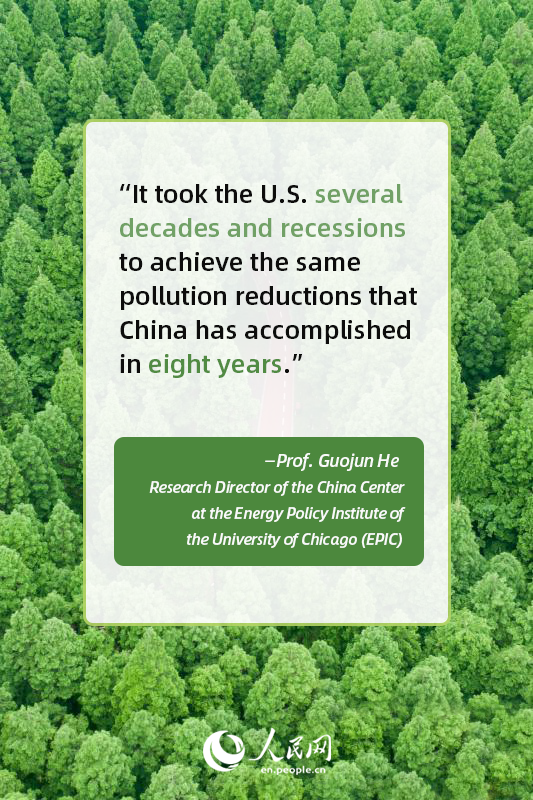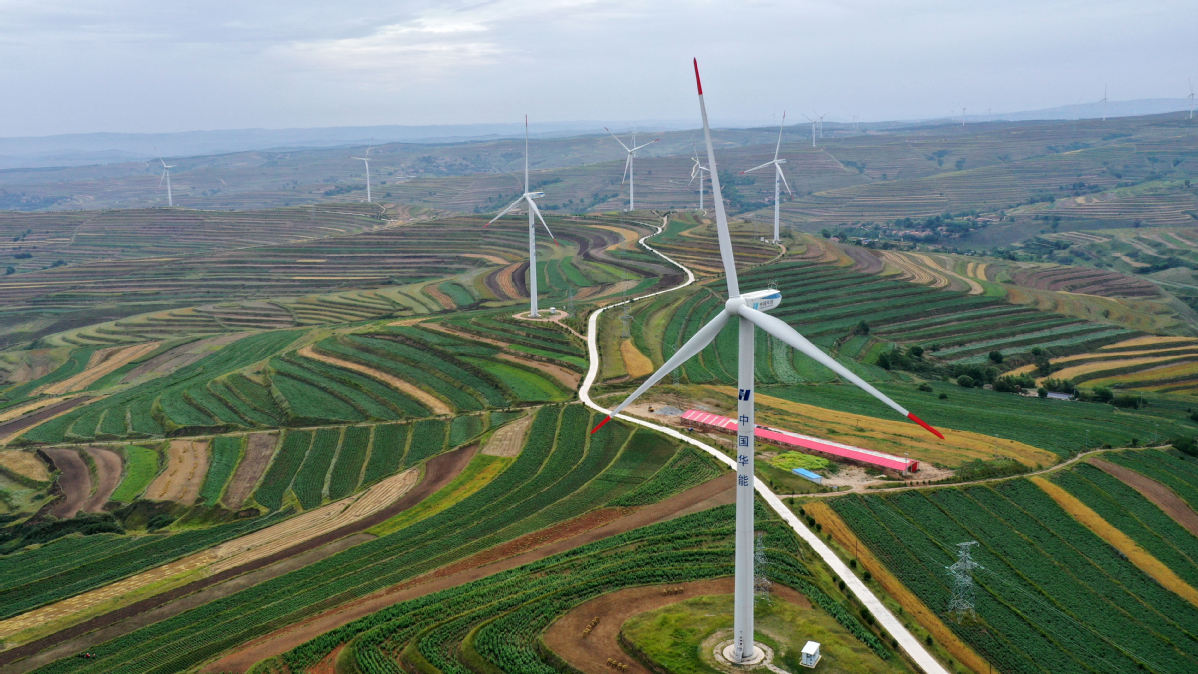China's war against pollution extraordinarily successful: University of Chicago researcher

"China's air pollution reductions account for more than three-quarters of the global decline in pollution since 2013," a University of Chicago researcher said in a recent interview with People' Daily Online.
War against pollution
In 2014, the Chinese government declared a "War Against Pollution" to tackle pollution with the same determination the country took in its battle against poverty. In 2021, Beijing's average concentration of PM2.5 dropped by 63 percent from 2013 levels, an average annual reduction of about 8 percent. Professor Guojun He, Research Director of the China Center at the Energy Policy Institute of the University of Chicago (EPIC), told People's Daily Online that China's war against pollution has been extraordinarily successful.
Compared with the pollution reduction process in the U.S., He said that "the United States started to focus on reducing pollution in the early 1970s, it took several decades and recessions to achieve the same pollution reductions that China has accomplished in eight years."
At the same time, He claimed that such air pollution reductions would add two more years to Chinese people's average life expectancy if these reductions can be sustained, based on his team's estimates. In addition to leading longer lives, there will also be significant reductions in medical expenditures on pollution-related illnesses and household spending on air purifiers and related equipment. "Overall, people can enjoy a higher-quality life with a better environment," He added.
Ambitious and welcomed carbon pledge
In a bid to pursue green growth, China has announced that it would strive to peak its carbon dioxide emissions by 2030 and achieve carbon neutrality by 2060. He said that China's carbon targets are very ambitious, and its pledge to achieve carbon neutrality is well-welcomed internationally.
He suggested that, in comparison, the EU needs to reduce around 4 billion tons of carbon, while the U.S. meanwhile needs to eliminate about 6 billion tons in carbon in order to achieve carbon neutrality; with both of them having relatively more time to abate their carbon emissions than China has. During this transition process, he believes that the entirety of industrial production in China will be revolutionized, and its importance is comparable to China's economic reforms over the past four decades.
With the target of achieving carbon neutrality, China has taken active actions to promote renewable energy. Now, China has the greatest program for renewable energy in the world and is also the world's largest producer of solar energy. In 2020, China built more wind power capacity than the rest of the whole world combined in the year prior.
He concluded that China's investments into renewable energy have been "tremendous" in the last two decades and spoke highly of China's efforts, saying that "I do think this strategy is critical to balance the environment and economy." Meanwhile, He pointed out that further expanding renewable energy will be critical for the country to achieve its carbon emission peaking and carbon neutrality targets.

A wind power plant in Dingxi, Gansu province. [Photo/Xinhua]
Experiences other nations can learn from
What can the rest of the world, especially developing countries, learn from China's path in pollution control? He proposed three points. First, pollution reductions require coordinated efforts across different regions, so the central government needs to have a strong willingness and capacity to mobilize resources to control pollution. Second, China's pollution control plans are comprehensive and target every source of pollution, while in many other countries, policies tend to only focus on a few industries or sectors. Finally, China uses powerful incentives to motivate local governors to improve their performance.
He noted that China's approach is very effective. However, the strong command and control policies being adopted often overlook large differences in the abatement costs associated with different sources of pollution, and sometimes local regulators use the "one-fit-all" strategy to control pollution.
"One solution is to introduce more market-based instruments (such as emissions trading, carbon taxes, etc.) to reduce emissions," He said.
To address global environmental challenges, He called on the world to work collaboratively in these areas, especially in terms of U.S.-China cooperation. He hopes that the two countries can carefully manage their differences and continue to promote cooperation in these areas. "There is simply no other way (except the cooperative way)."
Photos
 Increasingly more young adults in China register wills that include virtual assets
Increasingly more young adults in China register wills that include virtual assets Rapeseed flowers turn NW China's Luoping into picturesque spring wonderland
Rapeseed flowers turn NW China's Luoping into picturesque spring wonderland Why do people in China fall for animated characters like LinaBell and Bing Dwen Dwen?
Why do people in China fall for animated characters like LinaBell and Bing Dwen Dwen? Photo Album: architecture in Beijing merging history and modernity
Photo Album: architecture in Beijing merging history and modernity
Related Stories
- Senior Chinese lawmaker stresses deepening anti-pollution law enforcement
- Beijing sees dwindling local sources of PM2.5 pollution
- China's top legislator stresses preventing solid-waste pollution
- Lockdown helps researchers crack winter ozone pollution in China
- China's Hainan builds port power facilities to reduce ship pollution
Copyright © 2022 People's Daily Online. All Rights Reserved.






